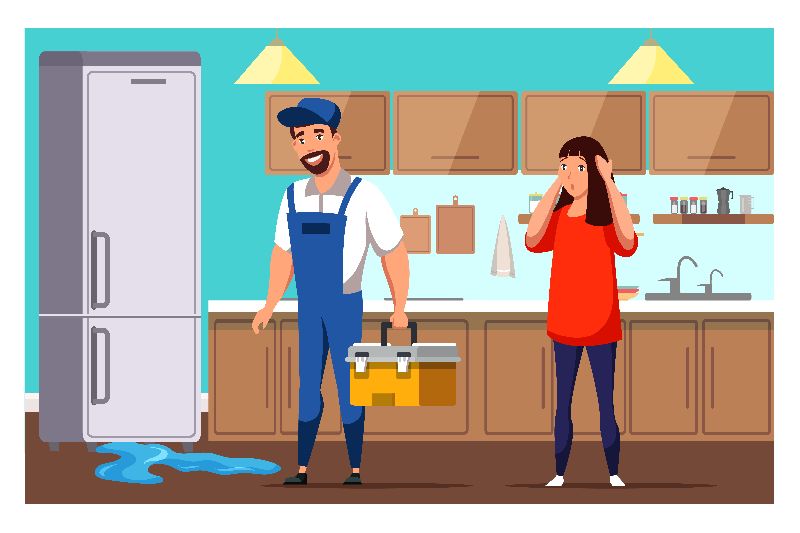
This syllabus outlines a comprehensive training program for individuals seeking to acquire skills in the repair and maintenance of domestic and commercial refrigerators. The program covers theoretical knowledge, practical skills, and safety procedures essential for a successful career in appliance repair.
1.1 Basics of Heat Transfer:
Conduction, Convection, Radiation
Insulation principles in refrigerators
1.2 States of Matter and Phase Changes:
Evaporation, Condensation, Melting, Freezing
Latent heat and sensible heat
1.3 Principles of Refrigeration Cycle:
Compressor, Condenser, Evaporator, Expansion Device
Pressure-Temperature relationships
Refrigerants: types, properties, environmental impact (CFCs, HCFCs, HFCs, Natural Refrigerants)
1.4 Types of Refrigerators:
Single-door, Double-door, Side-by-side, French-door
Direct cool vs. Frost-free systems
Commercial refrigerators (reach-ins, walk-ins, display cases)
2.1 Mechanical Components:
Compressor: Types (reciprocating, rotary, inverter), operation, troubleshooting
Condenser: Air-cooled, water-cooled, forced draft, natural convection
Evaporator: Fin and tube, bare tube, plate type
Expansion Devices: Capillary tube, thermostatic expansion valve (TXV)
Accumulator and Filter Drier: Purpose and function
2.2 Electrical Components:
Thermostat: Types (mechanical, electronic), function, calibration
Relays: Start relay (PTC, current, potential), overload protector (OLP)
Capacitors: Start capacitor, run capacitor
Fans: Condenser fan, evaporator fan, defrost fan
Heaters: Defrost heater (resistance, bimetal)
Sensors: Temperature sensors (thermistor), door switches
Control Boards: Electronic control units (ECUs), display panels
Lighting: Interior lights, LED lighting
2.3 Other Components:
Door gaskets and hinges
Drain pan and drain tube
Ice makers and water dispensers (components, operation, troubleshooting)
Evaporator drain heater
3.1 Basic Hand Tools: Screwdrivers, pliers, wrenches, wire strippers, multimeter
3.2 Refrigeration Specific Tools:
Manifold gauge set (R134a, R600a, R290 compatibility)
Vacuum pump and vacuum gauge (micron gauge)
Tube cutter, flaring tool, swaging tool
Brazing/soldering torch and consumables
Leak detectors (electronic, soap bubble)
Refrigerant recovery unit
Charging scale
3.3 Safety Equipment:
Safety glasses, gloves, protective clothing
Fire extinguisher
First aid kit
4.1 General Troubleshooting Principles:
Systematic approach to problem-solving
Listening to customer complaints
Visual inspection
4.2 Common Refrigerator Problems and Solutions:
No Cooling/Insufficient Cooling:
Compressor not running (electrical, mechanical)
Refrigerant leaks (diagnosis, repair)
Blocked capillary tube/filter drier
Fan motor issues (condenser, evaporator)
Thermostat/sensor malfunction
Defrost system failure (heater, bimetal, timer)
Excessive Freezing/Frost Buildup:
Defrost system issues
Door gasket leaks
High humidity
Refrigerator Not Starting:
Power supply issues (outlet, cord, fuse, breaker)
Thermostat failure
Relay/OLP malfunction
Compressor short/open circuit
Noisy Operation:
Fan motor issues (bearings, obstructions)
Compressor vibrations
Loose components
Water Leakage:
Clogged defrost drain line
Cracked drain pan
Water dispenser leaks
Bad Odors:
Clogged drain pan
Food spoilage
4.3 Electrical Diagnostics:
Using a multimeter for voltage, current, resistance, and continuity checks
Reading wiring diagrams and schematics
Testing individual electrical components
4.4 Refrigeration System Diagnostics:
Reading manifold gauges to diagnose system pressure issues
Understanding superheat and subcooling (basic concepts)
Leak detection techniques
5.1 Safety Procedures:
Electrical safety (lockout/tagout)
Refrigerant handling safety
Personal protective equipment (PPE)
5.2 Component Replacement:
Compressor replacement (evacuation, charging)
Condenser/Evaporator replacement
Thermostat/Sensor replacement
Fan motor replacement
Defrost heater/bimetal/timer replacement
Relay/OLP/Capacitor replacement
Door gasket replacement
Ice maker and water dispenser repair
5.3 Refrigerant System Service:
Refrigerant recovery procedures (EPA guidelines, if applicable)
System evacuation using vacuum pump
Refrigerant charging (weighing method, superheat/subcooling method)
Brazing and soldering techniques (leak-free connections)
Filter drier replacement
Flushing a contaminated system (brief overview)
5.4 Wiring and Control Board Repair:
Repairing damaged wiring
Replacing control boards (troubleshooting, programming if applicable)
6.1 Importance of Preventive Maintenance:
Extending appliance lifespan
Improving efficiency
Preventing costly breakdowns
6.2 Maintenance Tasks:
Cleaning condenser coils
Checking door gaskets
Cleaning drain pan and drain line
Checking fan operation
Inspecting electrical connections
6.3 Customer Service Skills:
Effective communication
Professionalism and ethics
Explaining repairs clearly
Handling difficult customers
7.1 Inverter Refrigerators:
Inverter compressor technology
Variable speed drives (VSDs)
Troubleshooting inverter systems
7.2 Smart Refrigerators:
Connectivity and smart features
Basic diagnostics via smart apps
7.3 Natural Refrigerants:
Hydrocarbons (R290, R600a) safety and handling
CO2 (R744) systems (brief overview)
7.4 Energy Efficiency:
Understanding energy ratings
Tips for improving refrigerator efficiency
Written Examinations (Multiple Choice, Short Answer)
Practical Examinations (Troubleshooting and Repair Simulations)
Case Studies and Problem-Solving Exercises
Refrigerator service manuals (manufacturer-specific)
HVAC/R textbooks and reference guides
Online technical forums and repair communities
Safety data sheets (SDS) for refrigerants